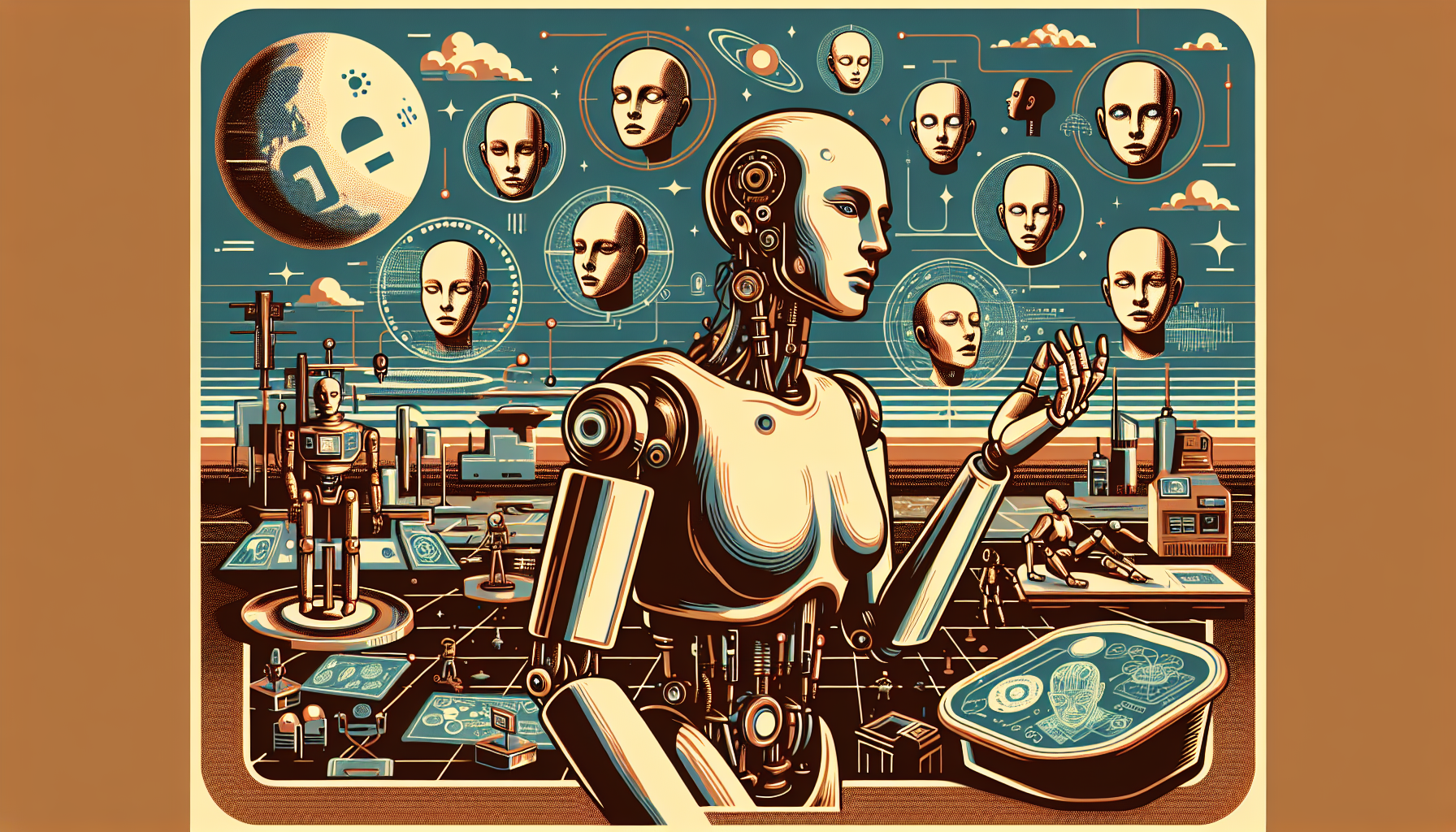The realm of robotics has long been intrigued by the idea of creating lifelike androids, entities that not only look human but also move and express emotions in ways that feel natural to us. Yet, for years, developers have grappled with the challenge of the “uncanny valley.” This term, coined by Japanese roboticist Masahiro Mori in 1970, describes the discomfort we feel when faced with a robot that looks almost, but not quite, human. This unease happens because our brains notice even the tiniest discrepancies in expected human-like behavior.
The Traditional ‘Patchwork Method’
For many years, engineers relied on what’s known as the ‘patchwork method’ to tackle this issue. Imagine trying to build a human face expression from small patches, each representing a different, pre-programmed scenario. This technique aimed to prevent awkward movements by carefully switching between these preset actions. However, it wasn’t perfect. Creating such detailed scenarios in advance proved challenging, and minimizing jerky transitions required meticulous fine-tuning.
The New Breakthrough: Waveform Movements
A beacon of hope emerges from Osaka University, where a research team has unveiled a game-changing technology. They’re making strides with what they call “waveform movements.” Think of each expression or gesture—like blinking or yawning—as a unique wave. These waves are then synchronized and sent to specific facial areas, ultimately combining to create intricate, real-time expressions.
Dynamic Facial Expression Synthesis
This innovative approach means engineers no longer need to stress over crafting diverse, predetermined action scenarios. The beauty lies in the system’s ability to generate complex facial expressions on-the-fly, shaped by the android’s “internal states,” which influence their emotional presentation. By tweaking these waveform movements through a process known as “waveform modulation,” the robot’s perceived emotional state can adapt instantly, perfectly echoing its apparent mood at any given moment.
Enhancing Emotional Communication
The potential of this breakthrough is immense. By breathing authenticity into androids’ expressions, this technology seeks to refine emotional communication between people and machines. With robots now poised to show animated, consistent facial emotions, interactions are set to feel more genuine and relatable. As Koichi Osuka, the research’s senior author, puts it, this advancement will allow robots to display vital mood changes in response to the world around them—including human interactions.
Overcoming the Uncanny Valley
The crux of the uncanny valley dilemma lies in the clash our minds face when encountering a being that almost looks human but doesn’t fully act the part. By ensuring facial expressions are not just surface-level but also deeply-connected to their emotional fabric, waveform movement technology could mark the start of androids genuinely perceived as having a “heart.” No longer just echoes of humanity, these androids can forge deeper, more meaningful connections.
Future Implications
The implications of this advancement are profound. Picture a world where robots blend into everyday roles, gracefully taking on tasks in customer service, healthcare, and scientific research. As they learn to express emotions in ways that resonate with us, androids could become indispensable allies in numerous facets of society.
In essence, this breakthrough in waveform movement synthesis is a pivotal stride in bridging the gap known as the uncanny valley. By infusing androids with genuine emotional depth and fluidity, this technology sets the stage for richer, more heartwarming interactions between humans and their robotic counterparts. The dream of truly lifelike robots steps ever closer to reality, promising a future where the line between robot and human blurs in the most harmonious, emotionally fulfilling ways.

Leave a Reply